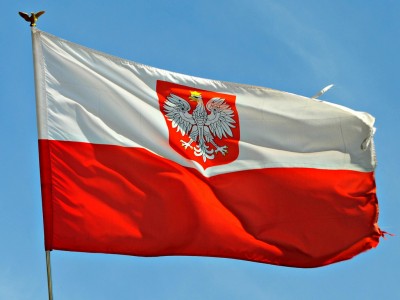Poland Considers Deployment of U.S. Tactical Nuclear Weapons, Directed against Russia

Last weekend, Polish Deputy Defense Minister Tomasz Szatkowski said that Poland is considering asking for access to nuclear weapons through a NATO program allowing non-nuclear states “to borrow” the warheads from the US.
This is a reverberation from the intensified debates within alliances regarding the nuclear support of NATO’s operations.
There are significant issues involving the increased scope and number of military exercises that simulate the use of mock bombs in conventional nuclear warheads, the military’s utilization of computer-based war games that test the use of nuclear weapons on the European continent, and the formulation of specific scenarios about the transformation of hypothetical conflicts using general-purpose forces into conflicts that involve nuclear weapons. NATO scientists and specialists take part in these discussions, as well as the current representatives of the alliance’s military and political leaders.
On June 25, 2015, during a hearing in the House Armed Services Committee, US Deputy Secretary of Defense Robert Work called for using nuclear forces to deter the “Russian threat.”
Commenting on the debates that took place during an Oct. 8 meeting in Brussels between the defense ministers of NATO countries, Adam Thomson, the UK Permanent Representative to NATO, publicly bemoaned the fact that the alliance “has done conventional exercising and nuclear exercising” but has not conducted exercises on “the transition from one to the other.” He claimed that such a recommendation is being looked at within the North Atlantic alliance.
NATO Secretary General Jens Stoltenberg also supports strengthening the nuclear component in the military planning of this alliance that has identified Russia as its primary enemy.
In their analyses, military-political and academic insiders in the West typically do not distinguish between the strategic and tactical nuclear weapons belonging to the three Western nuclear powers: the UK, US, and France. As they calculate how best to defend “the entire territory of NATO,” they begin with the assumption that all those nuclear weapons can be commanded en masse. And because those weapons must be used “as a means to deter aggression, along with conventional weapons,” their special status should once again be recognized, as it was during the height of the Cold War during the 1960s-1980s.
In his statement Tomasz Szatkowski emphasized the need for the Polish armed forces to have access to the same American nuclear weapons as those entrusted to five of the member states of the North Atlantic pact: Belgium, Italy, the Netherlands, Turkey and Germany, all of which consented to stationing those weapons within their borders: “We want to see an end to the division of NATO members into two categories,” he said, explaining that he was referring to states that have long hosted American nuclear weapons vs. countries that still do not have them, meaning the allies that have only recently joined this military bloc, especially Poland.
The Polish Defense Ministry hastened to disavow their own colleague’s words, arguing that “within the defense ministry there is presently no work underway concerning the accession of our country to the NATO Nuclear Sharing program.”
But the further clarification that followed this message suggests otherwise, since the Polish defense ministry literally stated the following: “We have to consider various options, including some form of Poland’s participation in this program.” And as we all know, that program allows US nuclear weapons to be deployed within the borders of other states and to be used in military exercises that include the dropping of mock “nuclear bombs” from aircraft.
We must also look closely at how the first part of that answer is expressed: “there is presently no work underway …” Today. And perhaps that is true. But in the future?
Where are the guarantees that this will not happen? Especially when you consider that the NATO summit of May 2012 fused its nuclear, missile-defense, and conventional weapons into a single attack force. And when you consider that by mid-October Poland had already ratified a technical agreement to build a US missile-defense base in Redzikowo, the construction of which will begin next spring, with completion in 2018. Or, if we take into account another factor: NATO’s use of “dual-capable” aircraft that can potentially carry either nuclear or conventional bombs, and which have been used for 11 years by the alliance’s three nuclear powers that conduct the Baltic Air Policing operation in the skies over Latvia, Lithuania, and Estonia.
The appearance of American nuclear weapons inside Poland – regardless of the rationale or explanation for that decision – will signal a radical and dramatic exacerbation of the military and political status quo in Europe, lowering the barriers to the use of nuclear weapons in this densely populated region of the world and, ultimately, precipitating a real return to the years of the Cold War, to years of military confrontation between NATO member states and countries that were not part of this militaristic bloc.
Vladimir Kozin is Head of Advisers’ Group at the Russian Institute for Strategic Studies, Member of the Russian Academy of Natural Sciences and Professor of the Academy of Military Sciences of the Russian Federation.

